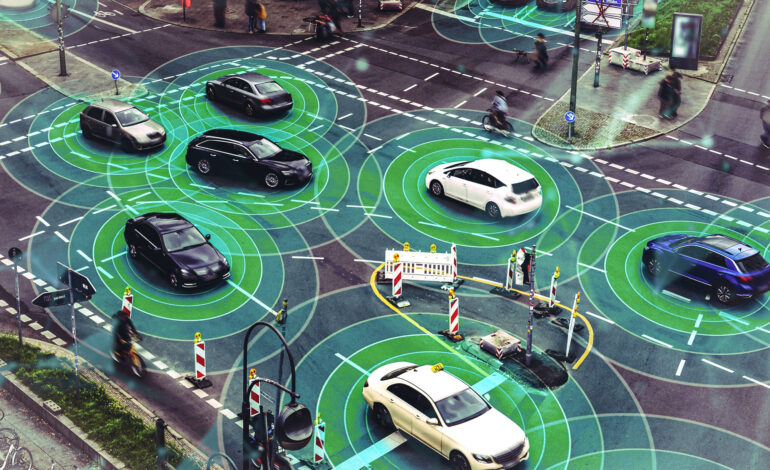Eco-Driving Solutions Could Slash CO2 Emissions by Up to 22%

Motorists sitting idle at traffic lights may not realize that their waiting contributes significantly to carbon dioxide emissions. A recent study conducted by researchers at MIT reveals that unproductive vehicle idling accounts for up to 15 percent of carbon emissions from U.S. land transportation. The study suggests that implementing eco-driving measures could lead to a substantial reduction in these emissions.
The researchers employed a sophisticated artificial intelligence method known as deep reinforcement learning to assess the potential impact of eco-driving in three major U.S. cities: Atlanta, San Francisco, and Los Angeles. Their findings indicate that fully adopting eco-driving measures could decrease annual intersection carbon emissions by between 11 and 22 percent. Remarkably, this reduction could be achieved without slowing down traffic or compromising vehicle and traffic safety.
Even a modest implementation—where merely 10 percent of vehicles adopt eco-driving techniques—could yield 25 to 50 percent of the total emissions reduction. This underscores the potential effectiveness of eco-driving as a viable solution for combating climate change. Moreover, the study highlights that optimizing speed limits at roughly 20 percent of intersections could produce about 70 percent of the total emission benefits.
Innovative Traffic Control Through AI
Cathy Wu, the senior author of the study and an associate professor in Civil and Environmental Engineering at MIT, emphasized the potential of vehicle-based strategies like eco-driving to make a significant impact on climate change. “Modern machine-learning tools can accelerate the kinds of analysis that support sociotechnical decision-making,” Wu stated. The research was co-authored by lead author Vindula Jayawardana and a team of graduate and undergraduate students from MIT, along with collaborators from ETH Zurich and the Utah Department of Transportation.
The modeling study spanned four years and focused on identifying various factors that affect vehicle emissions, including road conditions, vehicle types, and driver behaviors. The researchers identified 33 factors influencing vehicle emissions and constructed digital simulations of over 6,000 signalized intersections across the three cities. Through these simulations, they assessed more than a million traffic scenarios, applying deep reinforcement learning to optimize eco-driving behaviors.
While traditional traffic control measures typically rely on fixed infrastructure, such as stop signs and traffic signals, eco-driving leverages advanced vehicle technology. In the short term, this can include speed guidance through smartphone apps or dashboards. In the future, semi-autonomous and fully autonomous vehicles could receive intelligent speed commands via vehicle-to-infrastructure communication systems.
Assessing the Benefits and Implementation Challenges
The study indicates that adopting eco-driving on a large scale could lead to a significant reduction in emissions. The potential benefits vary based on city layouts, with denser cities like San Francisco experiencing less room for eco-driving implementation, potentially leading to smaller emission reductions.
Wu noted that even if only 10 percent of vehicles utilize eco-driving, cities could still achieve a 25 to 50 percent emissions reduction because non-eco-driving vehicles tend to follow eco-driving vehicles, benefiting from their optimized speed. The study also suggests that eco-driving could enhance vehicle throughput by minimizing emissions, although there is a risk that this might encourage more driving, which could negate some benefits.
The researchers assessed safety metrics, known as surrogate safety measures, and found that eco-driving is as safe as traditional driving. However, they cautioned that further research is necessary to understand the potential effects on human driver behavior.
The findings suggest that eco-driving could offer even greater advantages when combined with other transportation decarbonization strategies. For instance, a 20 percent adoption of eco-driving in San Francisco could cut emission levels by 7 percent. When paired with the expected adoption of hybrid and electric vehicles, total emissions could decrease by up to 17 percent.
“This research serves as a key reference for future assessments of eco-driving systems,” commented Hesham Rakha, a professor of engineering at Virginia Tech, who was not involved in the study. The researchers believe that eco-driving represents a practical and cost-effective intervention, as many vehicles are already equipped with advanced technological features.
Wu concluded by stating, “Eco-driving fits that bill for something that could scale quickly in practice.” The research received funding support from both Amazon and the Utah Department of Transportation, emphasizing the growing interest in sustainable transportation solutions.






